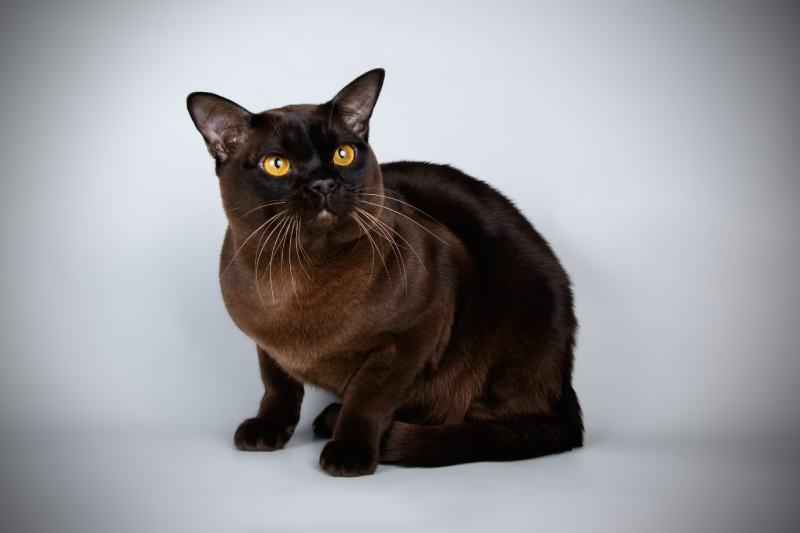12 Surprising Sphynx Cat Facts
By Kit Copson
Updated on
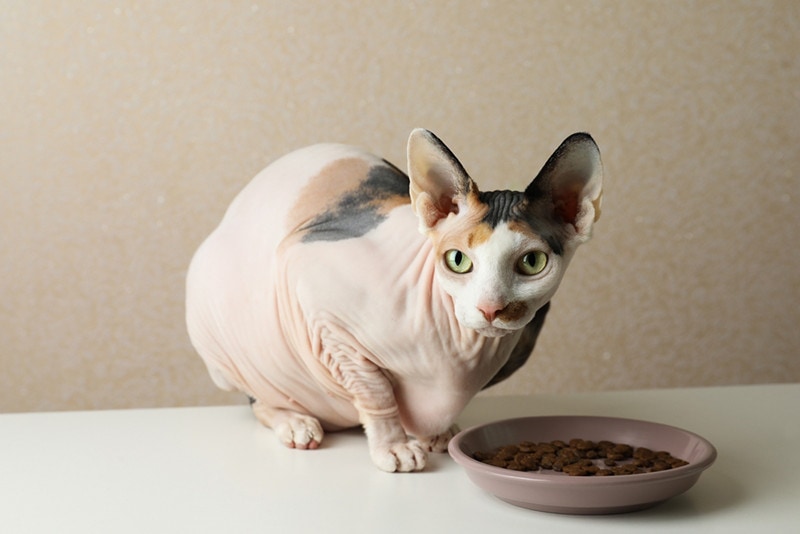
Sphynx cats, known for their elfin features and rocking the “nude look,” never fail to intrigue, but there’s much more to these felines than meets the eye.
We’ve dug out 12 astonishing facts about the Sphynx’s history, physiology, and personality that are sure to stun cat lovers everywhere. What’s more, if you’re a potential Sphynx parent, it’s essential to get clued up so you know how to approach caring for these unique cats, so let’s get stuck in.
The 12 Facts About Sphynx Cats
1. Sphynx Cats Do Have Hair!
It’s easy to assume Sphynx cats are completely bald, but this isn’t true. Sphynx cats have a very fine layer of soft, peachy, fuzzy hair distributed either all over the body or in some areas. This type of hair is called “vellus hair”, and humans also have it for temperature regulation and skin protection. Your vellus hairs are the ones that stand up when you get goosebumps.
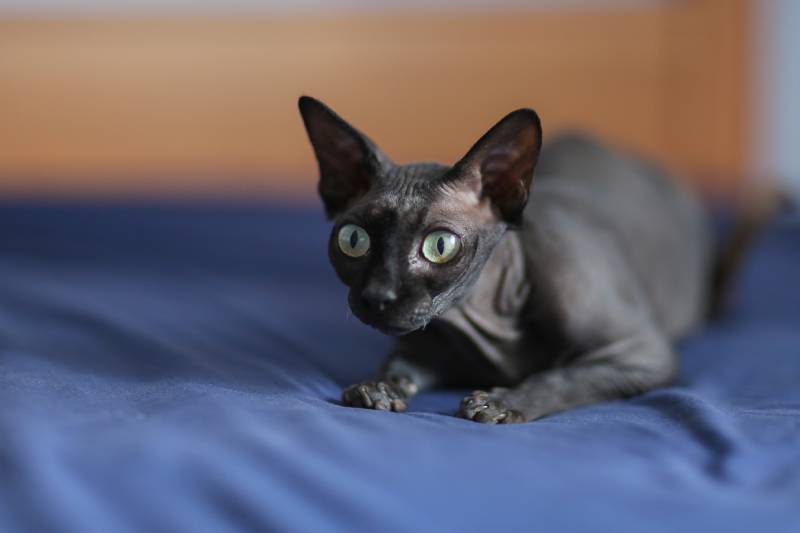
2. A Genetic Mutation Produces the Sphynx Coat Type
The Sphynx cat’s almost hairlessness is the result of a naturally occurring genetic mutation that only comes about every 15 years. From the 1960s, breeders began selectively breeding this recessive trait to produce Sphynx cats.
The gene affected is the one that provides hairs with keratin, the hair-forming protein, and both parent cats must be carriers of this recessive gene. Cats with a regular amount of hair have approximately 60,000 hairs per square inch, whereas some Sphynx cats only have about 1,000 (this can vary).
3. Most Sphynx Cats Love to Cuddle
While every cat’s personality is different, Sphynxes are notoriously affectionate and cuddly, which may have something to do with their extra need to keep warm. They’re also very intelligent, playful, and curious, which makes them wonderful companions. Some are alarmed by the Sphynx’s unusual appearance, but these cats are truly some of the loveliest you could hope to meet.
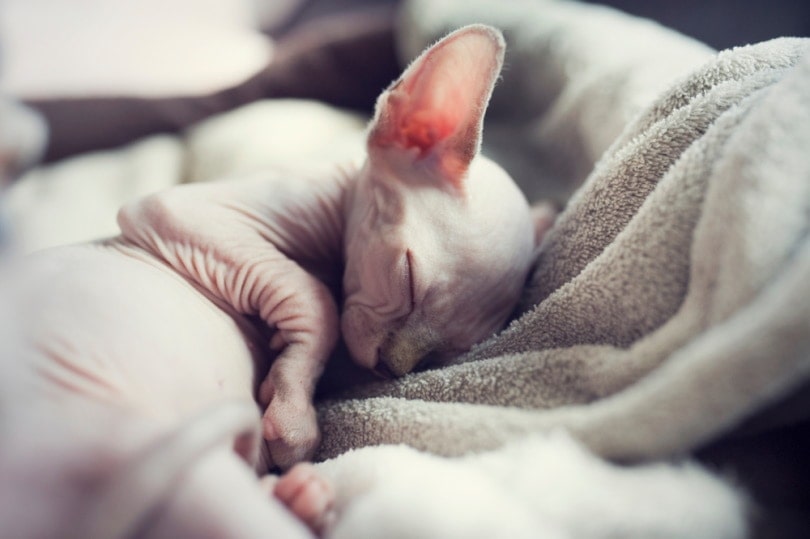
4. Sphynx Cats Come in Many Colors
Just because they don’t have big, thick coats, it doesn’t mean Sphynx cats can’t have a wide variety of colors! And when we say “wide”, we mean “really wide”. Sphynxes come in red, blue, white, black, cream, chocolate, lavender, fawn, cinnamon, sable, champagne, platinum, and a huge range of tabby, tortoiseshell, calico, and bi-color patterns and combinations. You can also find mink-patterned Sphynxes.
5. Sphynxes Came Out of Canada
Canada was the birthplace of the Sphynx we know and love today, which may come as a surprise to some given the lack of hair when these cats come from such a cold place. In Ontario in the 1960s, a kitten was born hairless due to a natural genetic mutation. More hairless kittens were born in the 1970s in Toronto and Minnesota (US), and breeders took it from there.
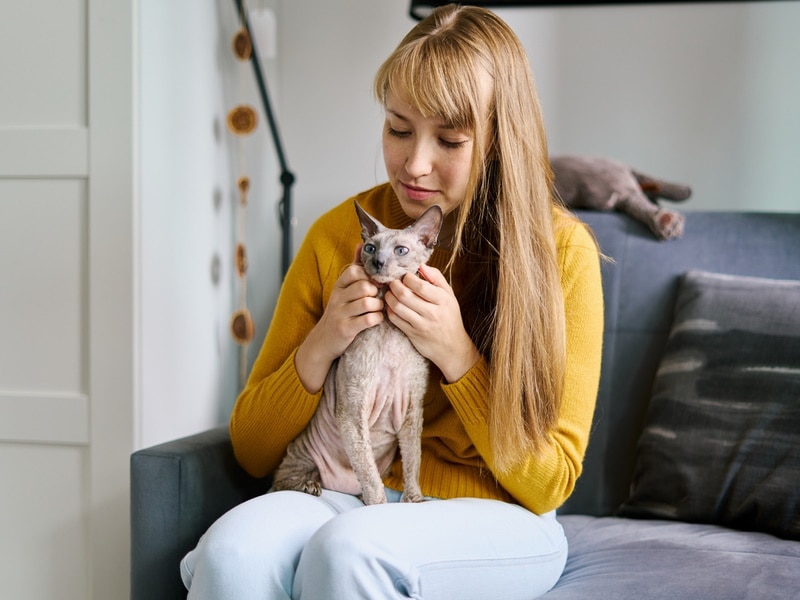
6. Hairless Cats Go Back a Long Way
Though the modern Sphynx originated in Canada in the 1960s, hairless cats have been around for a very long time. It’s believed that hairless cats were bred by the ancient Aztecs.
7. Sphynx Cats Need Baths
Unlike most cats, Sphynx cats need to be bathed—usually, every week, though this depends on how quickly your Sphynx gets greasy—because they don’t have enough hair to soak up all the oil they produce. A build-up of oil can also lead to bacterial and fungal infections.
You’ll need a gentle, cat-safe shampoo for bathing your hairless cat, and be sure to never use human shampoos as this could irritate your Sphynx’s sensitive skin.
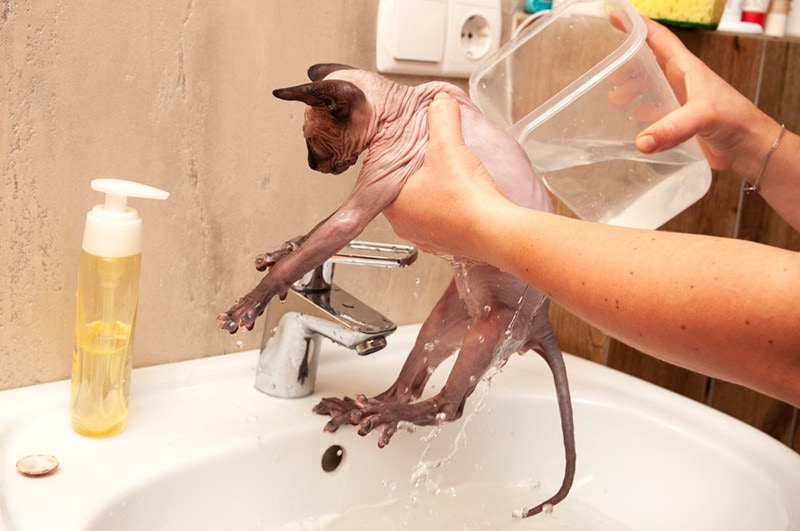
8. Sphynxes Have a Fast Metabolism
It can be baffling for some that such a little cat can eat so much or always seem hungry, but Sphynxes need to consume more calories because their bodies have to work harder to stay warm.
Since the guidelines on food packages don’t usually detail how much is ideal for a Sphynx in particular, it’s best to talk to your vet about the correct amount to feed. Every cat has slightly different needs depending on their age, body weight, and any medical issues they may have.
9. Sphynxes Can Get Sunburnt
Given that they don’t have enough hair to protect them from the sun, it’s not hard for a Sphynx to end up sunburnt. This can happen because the cat spends too long outside in the sun’s glare or sunbathing on windowsills. Keep a close eye out in the summer months in particular and provide plenty of shady spots and cool, clean drinking water for your Sphynx.

10. Sphynxes Are Not Hypoallergenic
Contrary to common belief, Sphynx cats are not truly hypoallergenic because they still produce the dander which triggers allergic reactions. It’s a misconception that pet hair alone causes reactions. Pet allergies are triggered by a protein in dander (dead skin flakes) that the animal sheds as well as saliva, sweat, and urine.
For this reason, you may still experience an allergic reaction around a Sphynx, even if that Sphynx doesn’t have as much hair as most other breeds.
11. There Are Several Breeds of Hairless Cat
When we think of hairless cats, we tend to automatically picture the Sphynx, but the Sphynx is just one type of hairless cat of many. That said, many hairless breeds are derived from Sphynx crossings.
Other hairless (or almost hairless) breeds include the Donskoy, Bambino, Minskin, Ukrainian Levkoy, Peterbald, Elf, and Dwelf. The Lykoi is another, but this breed is considered to be partially hairless.

12. Sphynxes Have a Higher Body Temperature than Cats with Hair
The Sphynx cat’s body has to work a bit harder than the average cat to keep warm, so their normal body temperature is about four times higher than that of full-coated cats. You can help your Sphynx keep warm with plenty of cuddles and cozy spots to retreat to.
Conclusion
Sphynx cats may be a little different from other cats in terms of appearance and care requirements, but they’re still cats all the same! In fact, Sphynxes are often described as major snugglebugs with fantastic personalities, so don’t be surprised if you find yourself quickly charmed by one. If you’re a potential Sphynx cat parent, please consider liaising with a rescue organization to find your new best friend.
Featured Image Credit: New Africa, Shutterstock


